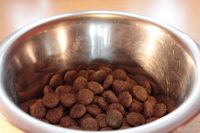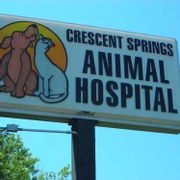Animal Clinic Experts Explain How to Interpret Pet Food Labels

One of the best ways to ensure your pets stay as healthy as possible is to remain actively aware of everything they consume. That extends to a deeper understanding of pet food labels, which can often be confusing thanks to a lack of consumer-friendly terminology and even a little intentional obfuscation. That's why the veterinarians at Crescent Springs Animal Hospital encourage pet owners to learn how to read and interpret pet food labels. This family-oriented animal clinic provides the highest-quality pet care in the Greater Cincinnati and Northern Kentucky areas, and they want to help you care for all of the furry friends in your life.
When in doubt about a specific pet food, it always helps to speak to the vets at your local animal clinic. In the meantime, here are a few ways to more accurately read and interpret those often complex labels:
 The Dry Matter Basis Comparison: One of the key concepts of pet food labels is something called Dry Matter Basis, or DMB. This expresses the amount of a particular ingredient as a percentage of the total solids in the package. Thus, if a certain pet food contains 10% moisture, the rest of the ingredients make up 90% of the whole.
The Dry Matter Basis Comparison: One of the key concepts of pet food labels is something called Dry Matter Basis, or DMB. This expresses the amount of a particular ingredient as a percentage of the total solids in the package. Thus, if a certain pet food contains 10% moisture, the rest of the ingredients make up 90% of the whole. - Breaking Down Ingredients: If it seems like pet food ingredient lists are among the most confusing labels on the shelf, you're not alone. With DMB in mind, you'll be able to understand the breakdown of ingredients. If a list starts with water, for instance, that's the predominant ingredient, with meat and other ingredients that follow taking up increasingly smaller portions. One trick companies use to make meat seem more prominent than fillers like corn is to split corn into smaller sub-ingredients, pushing the meat further up the list so it seems like a larger component.
- The Truth Behind The Meat: Speaking of meat, there are a few ways to tell how much your pet is actually getting. The Association of American Feed Control Officials has a few rules when it comes to names. If "beef food" is in the name, for example, the product must have a dry matter basis of at least 95% beef. Swap out "food" for words like "feast" or "dinner," however, and that percentage drops to 25. Similarly, the word "with"—as in "pet food with chicken"—only requires 3% of said ingredient.
It's all much more complicated than it needs to be, but a little bit of research may mean the difference between perfect health and an unexpected pet emergency. For any questions about any of your animal clinic needs, contact the caring veterinarians at Crescent Springs Animal Hospital. Visit them online for more information, and call them at (859) 331-6608 to schedule an appointment.
About the Business
Have a question? Ask the experts!
Send your question

